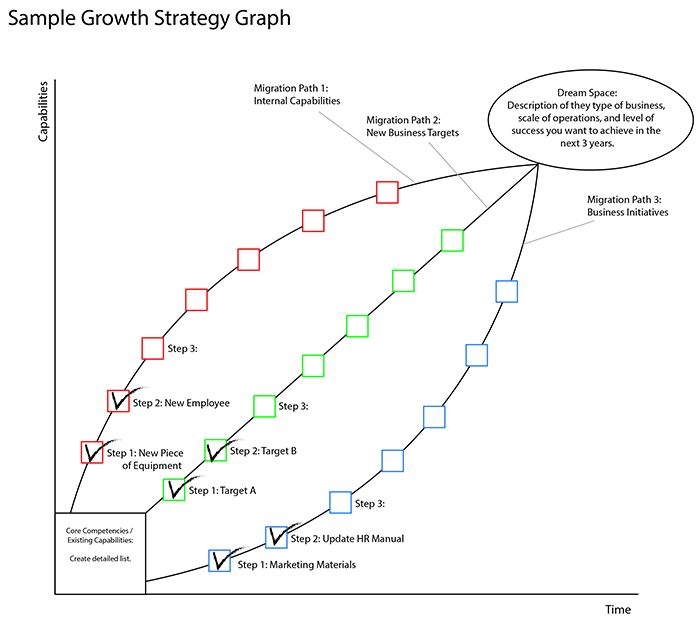As business owners, we fight the good fight every single day. We put in long hours, late nights and every ounce of energy we have to ensure that our business grows and prospers. Unfortunately, because we are mired down in the minutia of day-to-day operations, many of us fail to define a clear vision for the future. I’m not talking about that business plan or annual budget that we stress over for two weeks per year. I’m talking about a real, actionable plan.
I was a Japanese major in college, which frankly taught me nothing about running a video and music production company. Fortunately, I had the passion and energy to learn on the fly, which allowed us to adapt to a changing economic environment and grow our business to a self-sustaining level. But what I didn’t have was a strategy for growth. We executed the work that showed up at our door and did our best to make a profit, but we weren’t in the driver’s seat.
I soon realized that to make a significant leap forward, I was going to have to seek professional help. I looked into several different business development programs, but so many of them were targeted towards startups, and we had been in business for 10 years. Then, I was introduced to HEMP. No, I didn’t turn to a life of drugs; I applied and was accepted to the Helzberg Entrepreneurial Mentoring Program.
It was my HEMP mentor who introduced the single most useful tool I have in my business arsenal, a Growth Strategy Graph. This is not something that is written down on a piece of paper to be filed away, it is written on a 6’ white board on my office wall to serve a constant reminder of the task at hand.
We started by examining our existing capabilities and looking at our “dream space,” or the place we wanted to be in three years. (It was important not to look too far ahead as circumstances change too quickly in our fast-paced business environment.)
On the Growth Strategy Graph, we created different paths that, when executed in tandem, lead you in a measured fashion toward your dream space. We call these migration paths, and the paths we tracked were Internal Capabilities, New Business Targets and Business Initiatives that were intended to strengthen our business.
Each path has a series of steps intended to coincide with a step on each of the other migration paths. So when you take a step forward on one path, you must take a step forward on each of the other paths. For example, to land a specific new business target, we will need certain marketing materials (Business Initiatives path) and a new piece of equipment (Internal Capabilities path) that allows us to execute for that specific client (See the sample Growth Strategy Graph below).
As we began to implement new initiatives, we were able to target new business opportunities and grow our infrastructure of people, services and equipment. This simple-to-use, ever-present and ever-changing Growth Strategy Graph has allowed us to focus on the individual details that will lead to accomplishing the ultimate goals of our operation.
Getting lost in the day-to-day operations of your business is what we as business owners tend to do. But if you know that each step you are taking is leading you toward a targeted goal, success is more readily achieved. So, get yourself a big old white board, plan your work, and work your plan with your own Growth Strategy Graph, to take your business to the next level.



